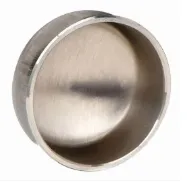-
Cangzhou Yulong Steel Co., Ltd.
-
Phone:
+86 13303177267 -
Email:
admin@ylsteelfittings.com
- English
- Arabic
- Italian
- Spanish
- Portuguese
- German
- kazakh
- Persian
- Greek
- French
- Russian
- Polish
- Thai
- Indonesian
- Vietnamese
- Zulu
- Korean
- Uzbek
- Hindi
- Serbian
- Malay
- Ukrainian
- Gujarati
- Haitian Creole
- hausa
- hawaiian
- Hebrew
- Miao
- Hungarian
- Icelandic
- igbo
- irish
- Japanese
- Javanese
- Kannada
- Khmer
- Rwandese
- Afrikaans
- Albanian
- Amharic
- Armenian
- Azerbaijani
- Basque
- Belarusian
- Bengali
- Bosnian
- Bulgarian
- Catalan
- Cebuano
- China
- China (Taiwan)
- Corsican
- Croatian
- Czech
- Danish
- Esperanto
- Estonian
- Finnish
- Frisian
- Galician
- Georgian
- Kurdish
- Kyrgyz
- Lao
- Latin
- Latvian
- Lithuanian
- Luxembourgish
- Macedonian
- Malgashi
- Malayalam
- Maltese
- Maori
- Marathi
- Mongolian
- Myanmar
- Nepali
- Norwegian
- Norwegian
- Occitan
- Pashto
- Dutch
- Punjabi
- Romanian
- Samoan
- Scottish Gaelic
- Sesotho
- Shona
- Sindhi
- Sinhala
- Slovak
- Slovenian
- Somali
- Sundanese
- Swahili
- Swedish
- Tagalog
- Tajik
- Tamil
- Tatar
- Telugu
- Turkish
- Turkmen
- Urdu
- Uighur
- Welsh
- Bantu
- Yiddish
- Yoruba

Dec . 17, 2024 05:38 Back to list
replacing galvanized pipes
Replacing Galvanized Pipes A Comprehensive Guide
Galvanized pipes, once a popular choice for plumbing systems, are now often considered outdated and problematic. Many homes built before the 1960s still contain these pipes, which are coated in a layer of zinc to prevent rusting. However, over time, this protective coating deteriorates, leading to corrosion, blockages, and potential health risks due to lead contamination. If you’re contemplating replacing galvanized pipes in your home, this guide will walk you through the reasons for replacement, signs to look for, available materials, and the replacement process.
Why Replace Galvanized Pipes?
1. Corrosion and Rusting Galvanized pipes have a lifespan of about 20 to 50 years. As they age, they become susceptible to rust and corrosion, which can cause significant water quality issues. As rust builds up inside these pipes, it can restrict water flow and lead to frequent clogs.
2. Water Quality Issues In the late 20th century, it was discovered that galvanized pipes could leach lead into drinking water, particularly if the water was acidic. Lead exposure poses severe health risks, especially to young children and pregnant women.
3. Low Water Pressure As galvanized pipes corrode, the cross-sectional area through which water can flow diminishes, resulting in decreased water pressure throughout the house.
4. Patching Problems Due to constant leaks and the need for frequent repairs, homeowners often find themselves spending more money patching old pipes instead of investing in a complete replacement, which offers a long-term solution.
Signs That It’s Time to Replace Your Pipes
- Discolored Water If your tap water appears rusty or discolored, it may be a sign that the galvanized pipes are corroding. - Frequent Leaks If you’re experiencing frequent leaks in your plumbing system or need to repair your pipes regularly, it’s undoubtedly time for a replacement. - Increased Water Bills Sudden spikes in your water bill can suggest leaks in your plumbing system that may be caused by aging galvanized pipes. - Water Pressure Changes Noticing significant changes in your water pressure can indicate pipe blockages due to corrosion or buildup.
Choosing Replacement Materials
When it comes to replacing galvanized pipes, there are several material options to consider
1. Copper Copper pipes are known for their longevity and resistance to corrosion. They are often considered the gold standard in plumbing materials but can be more expensive than other options.
replacing galvanized pipes

2. PVC (Polyvinyl Chloride) PVC pipes are lightweight, resistant to corrosion, and a more cost-effective solution than copper. They are ideal for drainage and venting systems but are not suitable for hot water supply lines.
3. PEX (Cross-Linked Polyethylene) PEX is becoming increasingly popular due to its flexibility, resistance to temperature extremes, and ease of installation. It is also less prone to scale build-up and corrosion compared to other materials.
4. Stainless Steel While generally costlier, stainless steel pipes offer excellent durability and resistance to rust and corrosion, making them a viable option for many homeowners.
The Replacement Process
Replacing galvanized pipes is a significant undertaking that requires careful planning and execution. Here are the key steps involved
1. Inspection Have a licensed plumber inspect your plumbing system to assess the condition of your galvanized pipes and identify potential problem areas.
2. Planning Discuss the best replacement materials for your situation with your plumber, factoring in budget, longevity, and specific needs of your home.
3. Permits Ensure you acquire any necessary permits required by your local building authority before beginning any plumbing work.
4. Replacement Depending on the size of the plumbing job, the replacement can take anywhere from a few hours to several days. Always hire a professional plumber to ensure that the job is done to code.
5. Test the System After installation, test your water pressure and check for leaks to ensure everything is working efficiently.
Replacing galvanized pipes is a proactive measure that can improve water quality, enhance water pressure, and increase the overall safety of your plumbing system. If you suspect that your home still has galvanized pipes, consider consulting a professional to evaluate your options and take the necessary steps towards upgrading your plumbing.
Latest news
-
ANSI 150P SS304 SO FLANGE
NewsFeb.14,2025
-
ASTM A333GR6 STEEL PIPE
NewsJan.20,2025
-
ANSI B16.5 WELDING NECK FLANGE
NewsJan.15,2026
-
ANSI B16.5 SLIP-ON FLANGE
NewsApr.19,2024
-
SABS 1123 FLANGE
NewsJan.15,2025
-
DIN86044 PLATE FLANGE
NewsApr.19,2024
-
DIN2527 BLIND FLANGE
NewsApr.12,2024
-
JIS B2311 Butt-Welding Fittings LR/SR 45°/90° /180°Seamless/Weld
NewsApr.23,2024











